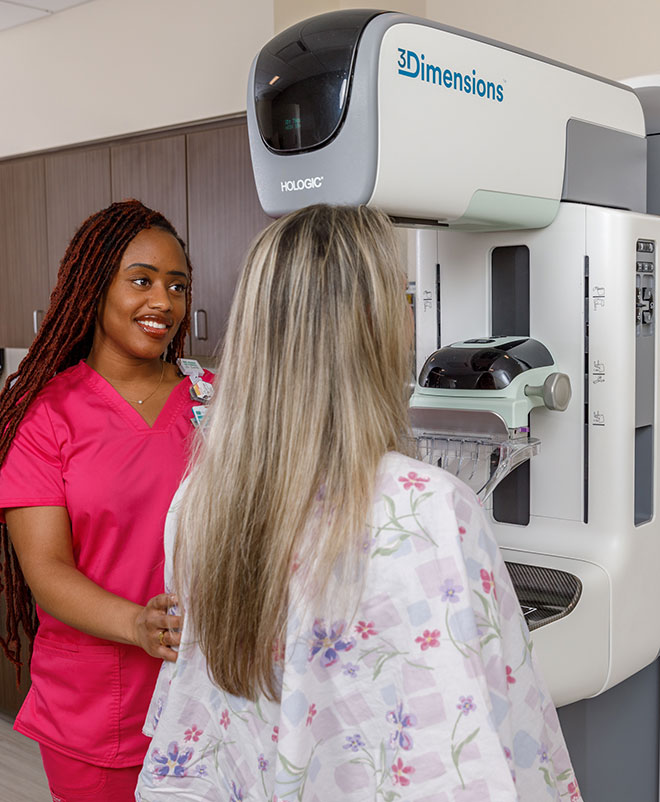What to Expect During Your First Mammogram
November 1, 2022
Facing your first mammogram? If you recently turned 40 or learned you’re at high risk of breast cancer, hopefully the answer to that question is yes.
Women should start annual screening mammograms at age 40. However, your genetics, family history and other risk factors may prompt your primary care or women’s health provider to recommend mammograms at a younger age. Here’s what you can expect and how to prepare for your first screening.
How Mammograms Work
A mammogram is an X-ray that takes detailed pictures of breast tissue. 3D mammography, also called digital breast tomosynthesis, takes X-rays from multiple angles. A computer combines these X-rays to create a 3D image that gives the radiologist a clear, highly detailed view of your breasts. These higher-resolution images may reduce the chances you get called back for a repeat mammogram. They can also lower the likelihood of false positives (results that suggest you have an issue when you do not).
“Mammograms are the gold standard for detecting breast cancer early, when we have more options for treatment,” says Jenny Kushnereit, manager of the Breast Health Center at Beaufort Memorial. “We encourage women to commit to an annual mammogram — it’s a straightforward, easy screening that can save lives.”
Read More: 5 Questions About Mammograms Answered
How to Prepare for Your First Mammogram
Most private insurance plans cover screening mammograms for women age 40 and older, and you do not need a doctor’s referral to have one. However, if you’ve noticed something unusual, such as pain, discomfort, leakage or a lump, discuss these symptoms with your healthcare provider before making your mammogram appointment. He or she may want the mammography technologist to pay special attention to certain areas.
You may also want to schedule your mammogram for the week after your period. Your breasts will be compressed during the screening, and they may be tender the week before your period.
On the day of your appointment, do not wear deodorant or lotion under your arms or on your breasts. These products can appear as white spots, and your radiologist (the specialist who reads and interprets the images) may think they are calcifications (signs of breast cancer or other breast conditions).
What Happens the Day Of
You’ll be asked to undress from the waist up and wear a robe or gown, so wear a two-piece outfit rather than a dress. The technologist will position your breast on a platform. A plate will compress the breast while the machine captures the best possible image. In general, mammograms are not painful, but you may experience mild discomfort when your breast is compressed.
As the technologist takes X-ray images, he or she will reposition the breast to take pictures from a different angle and then repeat the procedure on the other breast.
If your health care provider expressed concern about a particular area of the breast, the technologist might take more images of that area.
What Happens Next?
You will be provided with same-day results. After your screening, the radiologist will read your mammogram while you wait in the dressing room. Your results will be sent to your primary care or women’s health provider.
Your results may also reveal that you have dense breasts, which means you have more glandular and fibrous breast tissue than fatty breast tissue. Breast density increases a woman’s risk of developing breast cancer, and South Carolina law requires health care facilities to notify women if they have dense breasts. Your provider may recommend additional imaging, such as automated breast ultrasound.
Read More: Breast Cancer Screening for Women With Dense Breasts
In many cases, mammogram results are normal. For women who get called back for additional testing (which is fairly common), less than 1 in 10 are diagnosed with cancer, according to the American Cancer Society.
After your first mammogram, you should continue your monthly self-breast exams and schedule your next screening mammogram for the following year.
Due for your first mammogram? Request a mammogram appointment at a Beaufort Memorial Breast Health Center in Beaufort or Okatie.
